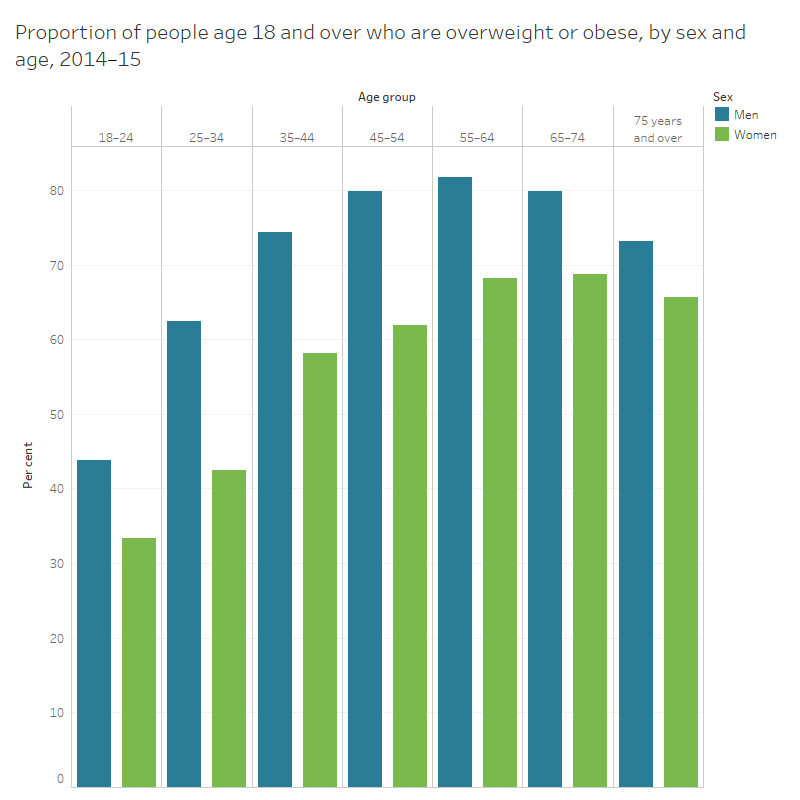Proportion of people obese and overweight
Definition: Proportion of people who are overweight or obese. Body mass index (BMI) is a measure that classifies a person as underweight, normal weight, overweight or obese. It is calculated as the person’s weight in kilograms divided by their height in metres squared. ‘Overweight’ is defined as a BMI of 25 and over and ‘obese’ is defined as a BMI of 30 and over.
BMI used to classify overweight and obesity is based on measured weight and height, rather than weight and height self-reported by respondents to surveys.

Source: ABS 2015d; Table S1.4.19.
- In 2014–15, the majority of Australian adults (63%) were overweight or obese.
- After adjusting for differences in the age structure, rates of overweight and obesity were 57% in 1995, 61% in 2007–08, and 63% in 2011–12 and 2014–15. For both men and women, rates of overweight and obesity were lowest for the 18–24 age group (being 44% for men and 33% for women).
- The proportions of children aged 5‒17 who were overweight or obese were 21% in 1995, 25% in 2007–08, 26% in 2011–12 and 27% in 2014–15 (ABS 2009b, 2013c, 2015d).
For more information, see Chapter 4.10 'Overweight and obesity'.


